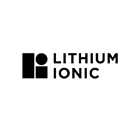Brazilian Lithium Developer Targets 2027 Production as Lowest-Cost Producer Amid Market Volatility
.jpeg)
Lithium Ionic's Bandeira project: 60%+ IRR, $1.5B NPV, $190M capex, 2-yr payback. Lowest-cost position with 2027 production target amid recovering lithium fundamentals.
- Lithium Ionic's updated Definitive Feasibility Study demonstrates exceptional economics with a post-tax IRR exceeding 60%, NPV of $1.5 billion, capital costs reduced by $70 million to $190 million, and a two-year payback period over a 18.5 year mine life
- The company upgraded resources from 21 million tons to 27.27 million tons M&I through strategic drilling, achieving approximately 77% conversion to proven and probable reserves (21 million tons)
- Partnership with R-TEK Resources, the team that built Sigma Lithium's operation, brought proven DMS plant design expertise and achieved significant capital reductions through optimised equipment selection and simplified mine sequencing
- The Bandeira project features unique spodumene-rich pegmatite deposits with exceptional homogeneity and direct comparability to the adjacent 30-year-producing CBL operation
- Management targets early 2026 for permit approval and end of 2027 for production, positioning as a lowest-quartile cost producer in a recovering lithium market with growing demand from EVs, energy storage, and AI applications
Lithium Ionic has improved its project economics despite challenging market conditions. The updated Definitive Feasibility Study reveals a post-tax IRR exceeding 60%, NPV of $1.5 billion, and capital costs reduced from $260 million to $190 million a $70 million reduction positioning the project among the lowest-cost lithium developments globally. CEO Blake Hylands emphasised:
"Rarely do you get deeper into these studies and update them and find that you're getting better numbers."
This reflects strategic shifts implemented in early 2025, including appointing COO Mike Westendorf full-time and partnering with R-TEK Resources, the engineering team that constructed Sigma Lithium's adjacent operation.
The Bandeira project in Minas Gerais, Brazil, represents a 18.5-year mine life with a two-year payback period. Located in the Araçuaí pegmatite belt one of only two regions globally hosting spodumene-rich pegmatite deposits at scale the project benefits from exceptional geological homogeneity. Hylands noted,
"As one of the lowest cost potential operators out there, we're a little more resilient to price fluctuation. And that's how a project like this still looks this great even in this price environment."
Resource Growth Through Targeted Drilling
Lithium Ionic achieved substantial resource expansion through targeted drilling completed at the end of 2024, increasing measured and indicated resources from approximately 21 million tons to 27.5 million tons, with 21 million tons converted into proven and probable reserves at a 77% conversion rate. Westendorf explained the drilling strategy:
"A lot of our drill density was focused on the first five years of production. So we have a fair bit of confidence in those early payback years, which gives us a lot of comfort that we'll have a strong startup."
The project employs a conservative 0.5% lithium oxide cutoff for underground resources. The deposit's classification as a spodumene-rich pegmatite (SRP) distinguishes it from complex LCT-type deposits. Hylands described the advantages:
"You're just taking pegmatites and grinding them down to bring large spodumene crystals out of it. And so you're not dealing with getting rid of lepidolite and amblygonite and petalite and these things that are complicated to chemically produce."
The project's proximity to CBL, a 30-year-producing lithium operation located 500 meters north, provides unprecedented validation. Westendorf emphasised:
"When we look at that deposit versus ours, structurally, geotechnically, geochemically, it's more or less identical."
Engineering Optimisation Reduces Capital
The $70 million capital reduction represents a significant achievement accomplished without compromising project robustness. Westendorf outlined three primary optimisation areas:
"Foreign exchange did have an impact on it, but it wasn't the majority. We focused on plant and surface facilities and simplifying them and making them a well-proven design that's supported by the R-TEK team. And then we also focused on the mine side."
The R-TEK partnership proved transformative. This team brought direct experience from multiple lithium startups, including Sigma Lithium and a recent South African mine. Their DMS plant design expertise enabled standardisation around proven modular units. Mining optimisation focused on equipment selection, fleet deployment sequencing, and mine plan adjustments minimising pre-operational costs. Management built additional capacity into the plant design, creating optionality to increase production if lithium prices strengthen.Hylands emphasised:
"What we didn't do here was make the project less likely to operate by cutting a bunch of costs so we could put out a number to the market that looks more attractive. In fact, I think we've always done the opposite."
Conservative Mine Design With Flexibility
The updated mine design reflects increased geotechnical conservatism while maintaining strong economics. Westendorf explained:
"In 2024 FS, we had 22.5 meter stopes. In this FS, we have 15 meter stoops. And we've added one additional ore drive per panel."
These smaller dimensions provide flexibility to manage ground conditions, informed by observations from the adjacent CBL operation. The mine plan strategically sequences production to optimise early cash flow. Initial production targets the southern property area, delivering approximately 1.19% lithium oxide grade. Westendorf outlined upside:
"If we see higher spot feed prices when we get into production, we've built in several levers into the model where we can ramp up additional production, increase our development rates and bring up higher grade material early in the mine life.”
The processing design employs a proven two-stage DMS circuit with coarse liberation providing tailings management advantages. The DFS conservatively assumes 65% recovery at 5.2-5.5% lithium oxide concentrate grades. Ore sorting is phased for later implementation, avoiding unnecessary upfront capital while providing dilution management tools.
Interview with Blake Hylands CEO & Mike Westendorf, COO, of Lithium Ionic Corp.
Market Positioning and Offtake Strategy
Lithium Ionic confronts a volatile market environment with spodumene ranging from $8,000 per ton peaks to $650 per ton troughs. Hylands articulated:
"In there is probably the true business. And as the business continues to develop and the electrification of the market continues to grow, this is the kind of project that's going to fit into it beautifully."
While Chinese converters dominate spodumene processing, Lithium Ionic secured a preliminary arrangement with the U.S. Export-Import Bank (EXIM) approximately 18 months earlier, positioning for potential U.S. automotive supply. Government support for domestic lithium supply represents an emerging tailwind. Hylands connected this to national security, "the Department of War... these are the groups that potentially helped us get a deal across the line with EXIM. I mean this is a matter of national defense for them."
Demand fundamentals remain robust despite near-term EV market headwinds. Beyond electric vehicles, battery storage for AI infrastructure and grid-scale energy storage represent growing demand vectors. Hylands summarised:
"Battery supply is still one of the largest and fastest growing industries in the world, if not the fastest".
Development Timeline Through Production
Lithium Ionic has advanced through Brazil's permitting processes, now targeting early 2026 for permit approval as a major de-risking catalyst. This timeline supports production by the end of 2027, positioning the company to enter the market as supply-demand dynamics potentially tighten. Westendorf noted:
"The longer these prices continue to stay down, very few companies can operate at these levels or get into production. So it's really a perfect storm forming for the lithium market."
The location in Minas Gerais, a traditional mining state provides jurisdictional advantages. The operational team is predominantly Brazilian-based. The company recently hired a new director of ESG in-country with proven stakeholder engagement experience.
Financial Strategy for Project Delivery
With sub-$200 million capital requirements and robust economics, Lithium Ionic occupies an attractive position for project financing. Hylands described: "There's not a lot of money to build a project with that kind of NPV, right? We're talking sub $200 million. There is a very large group that are quite interested in being part of that financing package".
The adjacent Sigma Lithium operation built by the same R-TEK team provides construction execution proof-of-concept. Management's emphasis on conservative assumptions positions the project to meet or exceed feasibility expectations, building credibility with financing partners.
The Investment Thesis for Lithium Ionic
- Exceptional Project Economics: Post-tax IRR exceeding 60%, $1.5 billion NPV, $190 million capex, and two-year payback position Bandeira among the highest-quality undeveloped lithium projects globally
- Lowest Quartile Cost Profile: Conservative operating assumptions and simplified processing enable profitability across price cycles, providing downside protection in weak pricing environments
- Proven Development Team: R-TEK Resources partnership brings the team that successfully built adjacent Sigma Lithium, reducing execution risk and validating capital estimates
- Geological Validation: Direct comparability to 30-year-producing CBL operation 500 meters away provides unprecedented technical validation of geological modeling and operational parameters
- Strategic Timing: Target production by end of 2027 positions company to enter market as prolonged low prices curtail new supply while demand growth continues
- Jurisdictional Advantages: Location in established mining state of Minas Gerais with trusted trading partner status and potential North American offtake supported by U.S. strategic interests
- Built-in Flexibility: Conservative base case with multiple levers to increase production or accelerate development provides upside optionality without additional capital
- Exploration Upside: Potential for 100-200 million tons additional resources across broader belt property significantly beyond current 19-year mine life
- Capital Efficiency: Sub-$200 million financing requirement for $1.5 billion NPV project attracts diverse financing interest
- Near-term Catalysts: Early 2026 permit approval and ongoing financing negotiations provide multiple value inflection points ahead of 2027 production
Macro Thematic Analysis:
The lithium market faces a structural supply-demand imbalance masked by cyclical oversupply. While prices have corrected sharply from 2022 peaks, sustained sub-economic pricing prevents new supply from meeting forecast demand growth. Battery storage demand continues expanding rapidly across electric vehicles particularly in Asian markets where adoption hasn't stumbled on grid-scale energy storage, and AI infrastructure requiring massive backup power. Hylands articulated the setup:
"The longer these prices continue to stay down, very few companies can operate at these levels or get into production or bring that supply that is being forecasted that keeps prices down. So it's really a perfect storm forming for the lithium market."
Projects like Bandeira, with lowest-quartile cost positions and sub-$200 million capital requirements, represent the rare developments capable of attracting financing in the current environment and delivering supply as the market tightens. Government strategic interests from the U.S. Department of Defense priorities to European supply chain security increasingly recognise lithium as critical to national competitiveness, creating premium opportunities for trusted jurisdictions. CEO Blake Hylands captured the opportunity:
"This is a matter of national defense for them. They're in an industrial war with the Chinese government and they're trying to take steps to try to catch up to something they're 10 years behind."
TL;DR:
Lithium Ionic's Bandeira project delivers exceptional economics (60%+ IRR, $1.5B NPV, 2-year payback) with significantly reduced $190 million capex through partnership with R-TEK Resources, the proven team that built adjacent Sigma Lithium. The lowest-quartile cost position provides resilience in weak lithium markets while positioning for substantial upside as supply-demand fundamentals tighten, with production targeted for end of 2027 following early 2026 permits.
FAQ's (AI Generated)
Analyst's Notes




Subscribe to Our Channel
Stay Informed


















